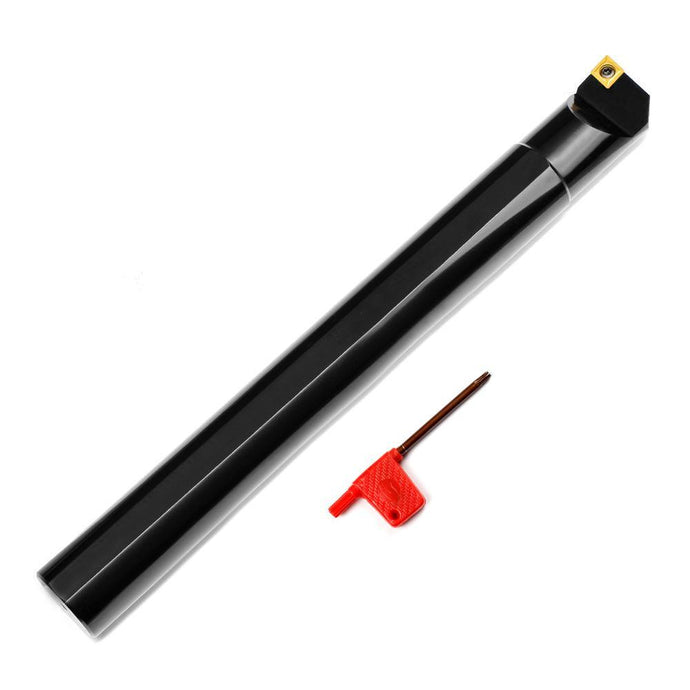In the intricate world of precision machining, the boring bar tool stands as a critical piece of equipment for achieving the utmost accuracy and smoothness in hole-making operations. Widely used across industries such as automotive, aerospace, and manufacturing, the boring bar allows machinists to refine and enlarge holes to exact specifications. This unassuming tool, often overlooked in favor of more complex machinery, is an essential instrument that transforms a basic drilled hole into a finished product with exceptional dimensional precision.
The boring bar tool is designed to perform a variety of tasks that go beyond simple hole drilling. Unlike drilling, which creates holes by removing material from the center of the workpiece, boring enlarges or refines an existing hole. It can correct inaccuracies in hole diameter, produce smooth, finished surfaces, and achieve deep holes that are not possible with conventional drills. The basic structure of the boring bar consists of a long, slender bar with a cutting tool mounted at one end. The bar itself is typically made from high-strength materials like carbide or high-speed steel, ensuring that it can withstand the stresses of high-speed operations without losing its cutting edge.
One of the key advantages of the boring bar tool is its ability to achieve a high degree of accuracy and finish in hole dimensions. When machining a hole to precise tolerances, particularly in cases where the hole needs to be perfectly round or have a smooth surface, the boring bar excels. By using fine adjustments, the machinist can control the depth and diameter of the hole with great precision, something that is not easily achieved through drilling alone. This makes the boring bar an indispensable tool for applications that demand strict adherence to tolerances, such as in the production of engine blocks or turbine components.
The versatility of the boring bar is another reason for its widespread use in machining operations. While its primary function is to bore holes, it can also be employed to create internal threads, smooth out irregularities, and finish rough cuts. In many cases, boring can eliminate the need for secondary operations such as honing or reaming, which would otherwise be required to achieve a desired finish. This not only saves time but also reduces the cost of production, making the boring bar an efficient solution for many manufacturers.
Boring bars come in various forms and sizes, each suited for specific tasks. Standard boring bars are used for general hole enlargement and finishing, while more specialized versions, such as offset or long-reach boring bars, are used for deep-hole applications or to access areas that cannot be reached by conventional tools. Some boring bars are even equipped with adjustable inserts that allow machinists to swap out cutting tips for different materials or types of cuts. This adaptability gives the boring bar tool a broad range of applications, from finishing small holes in delicate parts to tackling deep, large-diameter bores in tough materials like cast iron and steel.
However, the effectiveness of a boring bar tool is not solely reliant on the tool itself but on the entire machining process. Factors like cutting speed, feed rate, and the rigidity of the machine setup play crucial roles in determining the quality of the final result. High cutting speeds can help achieve smoother surfaces, but they also generate more heat, which can lead to tool wear and surface imperfections if not carefully controlled. Similarly, choosing the right insert or cutting edge for the material being worked on is vital. For harder materials, a more durable carbide insert may be necessary, while softer materials might require a different geometry to achieve the best finish.
In addition to its impressive precision and versatility, the boring bar tool is highly valued for its efficiency. As manufacturers demand faster production times without sacrificing quality, the boring bar tool provides an effective solution for high-precision tasks that might otherwise take multiple steps or more advanced machinery. Modern advances in boring bar design, including the integration of advanced coatings and carbide tips, have further improved the performance and longevity of these tools, allowing for greater cutting speeds and more accurate finishes over extended periods of use.
Proper maintenance and setup are also key to maximizing the performance of a boring bar tool. Regular inspection of the cutting edges, ensuring proper alignment, and using the correct cutting fluids can significantly prolong tool life and enhance machining results. With the right care and handling, a boring bar can deliver consistent, reliable performance across a wide range of applications, making it a staple in the toolbox of any skilled machinist.
In the end, the boring bar tool is far more than just a simple hole enlarging device; it is a precision instrument that enables machinists to push the boundaries of what is possible in manufacturing. By combining the art of fine-tuned adjustments with the science of cutting-edge technology, the boring bar continues to be an indispensable tool in the quest for flawless precision in modern machining.


